"I grew up in a hot-rod culture" says Tom Kundig
American architect Tom Kundig has spent decades creating buildings that celebrate rough-and-ready materials and mechanics. In this exclusive interview, he explains how the rise of digital fabrication has affected his design philosophy (+ slideshow).
Kundig, 61, has been a partner at Seattle firm Olson Kundig since 1986, and is responsible for projects that range from rustic wilderness cabins to museum galleries with moving walls.
He followed in the footsteps of a Swiss father by becoming an architect. But he took more influence from a mentor, American sculptor Harold Balazs, as well as from the car mechanics and industrial industries that dominated his Washington-based childhood.
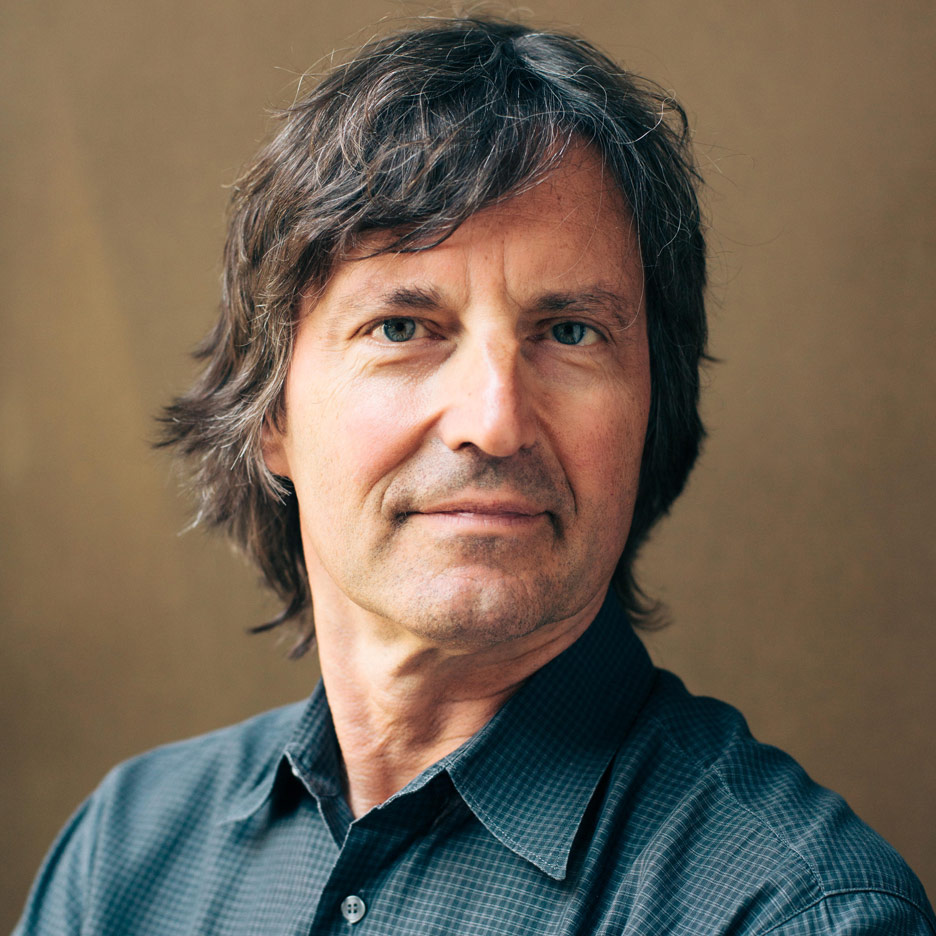
"Historically there was not a DIY attitude in Europe; you hired people to do the stuff. But North America is very much based in DIY – it was expected frankly," Kundig told Dezeen.
"[Harold] would say that, in order to really understand the anomalies, and the real subtleties and nuances of a piece, you have to build it," he added.
This advice led to a hands-on approach that centred around making and modifying – Kundig calls it "hot-rodding".
"I grew up in a hot-rod culture, so virtually every garage in my neighbourhood had a hot rod that was under construction," he explained.
"I was involved in working on these vehicles and working, not just on the mechanics, but on the bodies. I've just always been interested in the physical act of movement and engineering."
More recently, Kundig's firm has started to experiment with digital fabrication, from CNC milling to 3D printing, although he is careful not to undervalue the role that old-school craft plays in his design.
"Traditional craft has a culture we may lose if we start digitising and digitally fabricating everything," he said, before adding that digital fabrication is "here and it's not going away".
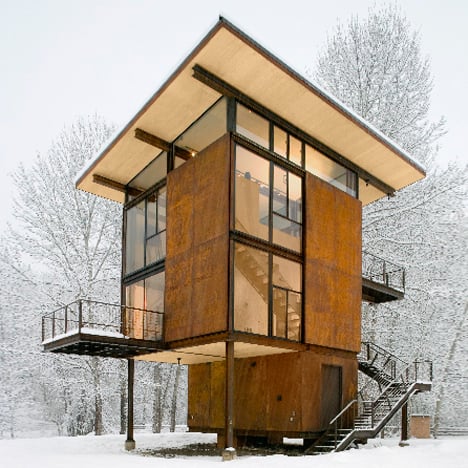
"I think there was an interesting phenomenon where digital fabrication meant fetish indulgence," he said. "If you fabricate things from soup-to-nuts, from cradle-to-grave; if you fabricate along the way, digitally, you can actually be quite efficient about it. But I don't think we've cracked that nut yet."
Kundig also warned that these new technologies could lead to the loss of regional variations in architecture.
"Digital fabrication also means it can be digitally fabricated away from your town," he said. "The danger is that stuff could be built offshore, brought onshore."
"A trailer can be built anywhere, and all of a sudden you've lost that economy of somebody building a thing," he added. "It isn't necessarily right or wrong. But everybody should realise that's what happens."
Here is an edited transcript of the interview with Kundig:
Amy Frearson: You recently gave a talk about the tradition of the 'maker architect'. Do you think there is a maker revolution going on right now?
Tom Kundig: It's kind of a shock that it's coming back, but not totally, if I reflect on it.
My dad was an architect, so I've been around architects most of my life, but I've also been around artists most of my life, and where architecture and art bifurcate is in fact in the making of the item.
It always bothered me a little bit when I was a kid – because I didn't want to be an architect when I was a kid – that I would always hear people say "oh, your dad built our house" or "your dad built our building". I remember thinking, "well, no he didn't, there were a whole bunch of other people that did that – he only had something to do with drawing it".
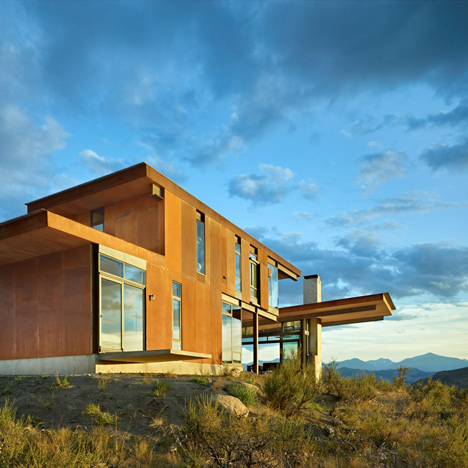
But the sculptor that I worked with, who was actually a very important mentor for my work, is a guy that built everything he designed. He would say that, in order to really understand the anomalies, and the real subtleties and nuances of a piece, you have to build it. So there's a bifurcation between architects and the builders of the thing. Naturally you do this thing, and then you hand it to somebody else and they build it, and I think you naturally lose the thread sometimes.
Amy Frearson: So you became much more of a maker architect than your father was?
Tom Kundig: Definitely. He came from the Switzerland, and in Europe generally there's a really strict line between just about everything. Historically there was not a DIY attitude in Europe; you hired people to do the stuff. But North America is very much based in DIY – it was expected frankly. And now it seems like the world is picking up some ideas from that.
So I'm very curious about the future. I think people like Assemble in the UK and Theaster Gates in Chicago have got a different idea that I think is very exciting and it'll be interesting to see where it goes.
Amy Frearson: What role has making had in your work to date? It seems like mechanics in particular have been central to your architectural projects.
Tom Kundig: That comes from growing up in a region that had a lot of mining and logging industries. I've always been interested in mechanical things and I grew up in a hot-rod culture, so virtually every garage in my neighbourhood had a hot rod that was under construction. So I was involved in working on these vehicles and working, not just on the mechanics, but on the bodies. I've just always been interested in the physical act of movement and engineering.
So when I went into architecture with a bit of a physics background, I naturally just folded it into the thing that I was working on, not with any intention of it gaining any sort of notoriety. If something came along, a client with something that was large or that seemed impossible, I knew based on experience that there were ways to solve it, just using what we call the seven simple machines. You don't have to use a motor and you don't have to use an engine.
Amy Frearson: And this was how you developed your hot-rod style of architecture?
Tom Kundig: Yes and I still call it hot-rodding sometimes! I mean, my house is called Hot Rod House, because it basically is a crappy old house that I've been trying to modify into something that is a little more interesting that what we bought.
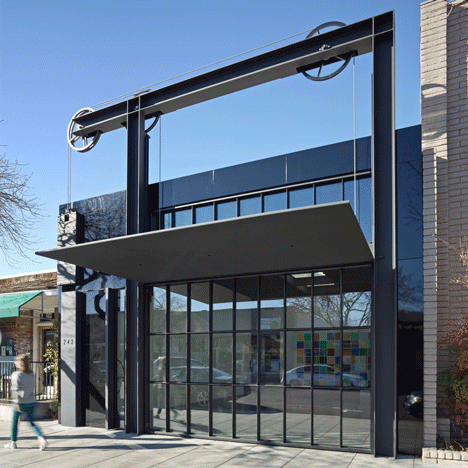
Amy Frearson: It seems like this approach has gone hand-in-hand with many of the small, rustic cabin projects you have completed over the years. Is this the type of project where your interests lie?
Tom Kundig: A little bit. I've always gone against the grain of what's happening, because it's more interesting to me. I'm not a follower. I have problems with authority maybe! Everybody wanted to do these big projects and I thought: "Well if everybody's doing big projects, maybe I'll do small projects and then I'll be the only one doing small projects."
But I also love doing small projects because you can do more of them and engage with the landscape better if it's a small little cabin. I'm a landscape-based person, whether it's an urban landscape or a rural landscape, I want to feel what's out there in the architecture. I'm not particularly interested in centrally focused architecture, I want it to be outwardly focused.
There's a whole bunch of reasons to do relatively small projects. For me it's research and development; it can happen quickly, turnover is quick. In small projects you can investigate an idea in a relatively short period of time.
Amy Frearson: Do you think the rise of digital manufacturing technologies is helping to revive traditional forms of making in architecture, or making them redundant?
Tom Kundig: So the question is, is digital fabrication actually making or is it running a machine?
Amy Frearson: And what do you think?
Tom Kundig: It's a dangerous question and a dangerous answer because I'm involved in both!
My projects have craftspeople that make beautiful things by hand the old-school way. So that traditional craft has a culture we may lose if we start digitising and digitally fabricating everything.
But then I am involved in digital fabrication. Of course, we do 3D printing in the office for models, we're involved in certain projects where they will be 3D fabrication of items, naturally. For example, a project we did a number of years ago was basically fabricated as components in British Columbia, in a small town called Nelson, and it was for a home in Hawaii. It was all done on CNC machinery. No hand really touched these beautiful pieces as they came together. They were perfect, and then they were assembled in Hawaii.
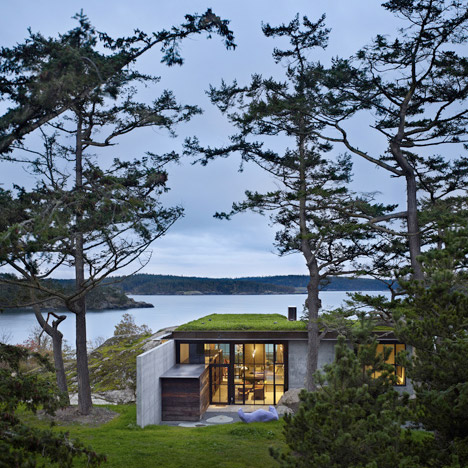
Amy Frearson: Do you think that digital making technologies have changed the way that your practice works? And if so, for better or worse?
Tom Kundig: I think it has opened up more possibilities. I think there was an interesting phenomenon where digital fabrication meant fetish indulgence, in other words, you could make any shape you wanted and you made any shape you wanted. Maybe that's really interesting on some levels, but on many levels that's a very wasteful way of making stuff; in other words if you make a very crazy shape and you use a big blob of material to make this crazy shape, then there's a lots of stuff on the shop floor that gets thrown away.
If you fabricate things from soup-to-nuts, from cradle-to-grave; if you fabricate along the way, digitally, you can actually be quite efficient about it. But I don't think we've cracked that nut yet.
There's a reason a lot of the materials, if you look around, are all made out of straight pieces. Take bricks for example. They are the size of your hands, and were specifically designed so somebody could pick them up with their hand. It doesn't have to be done that way if it's digitally fabricated or placed. So there are a lot of questions. You could also stack them in tight little boxes, so it becomes efficient if its not a big crazy shape.
I could talk for days on digital fabrication and the future of it. I think it's here and it's not going away. I only draw, I only use my hands, I don't use a computer. But people in our office do beautiful work on the computer.
Our digital world does raise an issue about culture ultimately, because digital fabrication also means it can be digitally fabricated away from your town, so component building, prebuilt buildings, anything that can be done digitally or remotely. The danger is that stuff could be built offshore, brought onshore. I used to work in Alaska, where a lot of the work was done down in Washington and Oregon.
Frankly, bottom line, trailer houses are prefab buildings. A trailer can be built anywhere, it can be built offshore, it can be brought in, and all of a sudden you've lost that economy of somebody building a thing. It isn't necessarily right or wrong. I'll be agnostic about an opinion on that. But everybody should realise that's what happens when you digitally fabricate.
Amy Frearson: Is there a genuine danger that architecture is losing its regionalism?
Tom Kundig: That's exactly right.
Amy Frearson: Do you think the answer lies in traditional crafts and techniques? Because you could say that architects like Assemble and Theater Gates have developed a new style of regionalism that instead centres around community engagement.
Tom Kundig: I totally agree. That social, cultural part is really interesting to me. The question is always how you bring those pieces together in your own region. I think it will be fascinating to see what happens in the future. Possibly a more relevant future for architects than what we've been doing over the last few years. Their work seems to me to be more true to the idea of a maker architect or a maker builder.
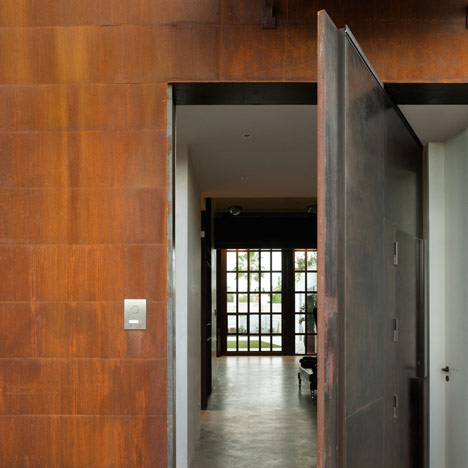
Amy Frearson: There does seem to be a strong focus on socially minded architecture at the moment, especially because Alejandro Aravena is curator of this year's Venice Architecture Biennale. Do you see Olson Kundig taking a more socially driven approach to architecture in the future?
Tom Kundig: I have to say, I've always been more of a project delivery person. Give me the project. But of course, a socially driven project I do get super excited about. We have a couple of them in the office right now that aren't even particularly interesting architecturally but really interesting culturally in our region. So there is an agenda to make beautiful things that are socially and culturally relevant, but just that's the environment that I grew up in, frankly.
We did one project in our office called Storefront, where we just grabbed a storefront that was un-leased and empty. We went in there and we curated, about once a month, an intervention that had nothing to do with architecture but had something to do with an idea. God, it was so popular! And it was so exciting because we just did it all pro bono, all on us. We had the kids in the office building it and designing it and proposing it. I look back on it and think: "Jeez, what a great moment in time."
So we have some done some things with no intention other than engaging the culture down at street level. It was super exciting.
Architecture is not necessarily always the central idea, I think architecture is just the platform for things to happen. It becomes the catalyst, the launching pad, the platform, whatever you want to call it. What that suggests is that – this is an overstatement but I'll say it anyway – the most successful architecture could improve if it took a different attitude. It's not there to be about "me, me, me". Really architecture is around for a couple of hundred years if you build it right.
Amy Frearson: That kind of brings us back to this idea of the maker revolution, and particularly the rise of open-source architecture. Maybe the future is going to be about making architecture as democratic as possible?
Tom Kundig: I worry about the open-source, democratic architecture a little bit, because you have to have a group that are smart about what they're doing, and I think that the democratic process can sometimes get a little messy. It doesn't mean it has to be a sole source, and it doesn't mean it has to be a single person, but I worry. It's like, if you go to see your doctor, you don't want that to be a democratic process, you don't want people having opinions.
Some of the political stuff that's happening in North America right now – it's a very democratic process and it's a pretty uncomfortable, messy process I can tell you that. But what I do hope is that the architecture of the future has a democratic ideal to it, that it is intended to engage, not the ego of the designer, but the ego of the community, and architects should be trained to think like that.